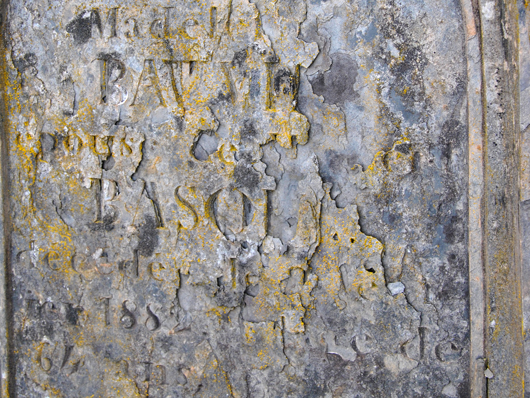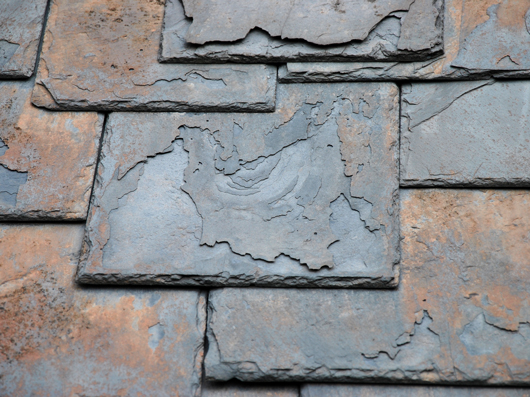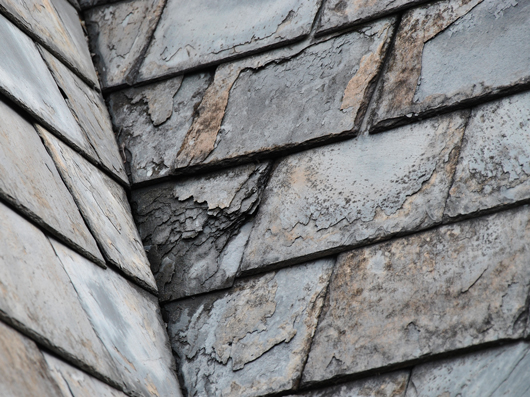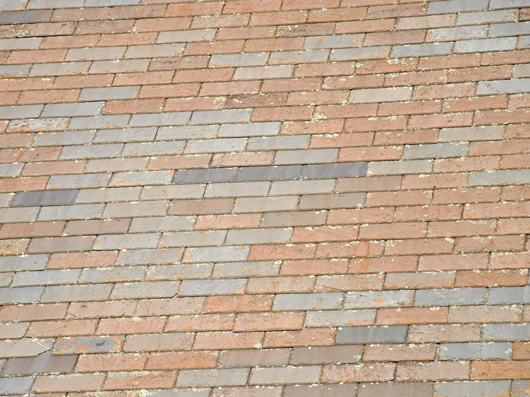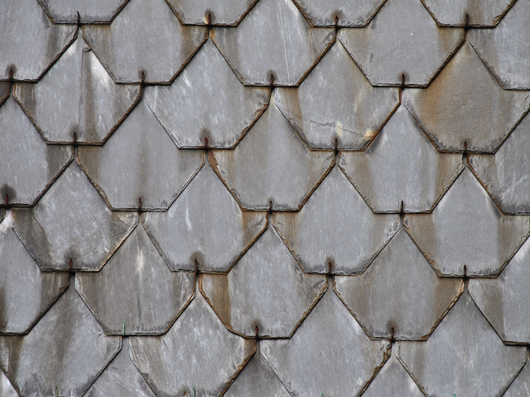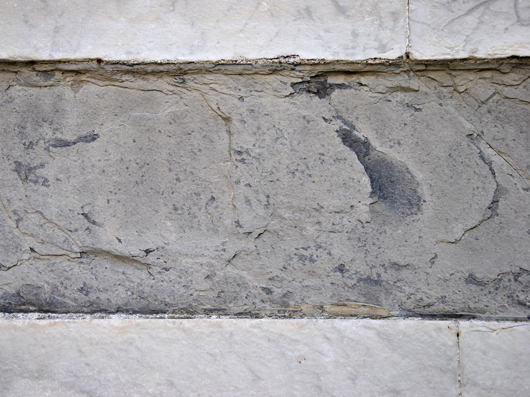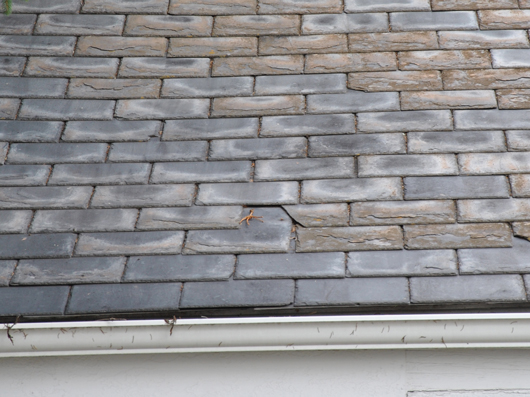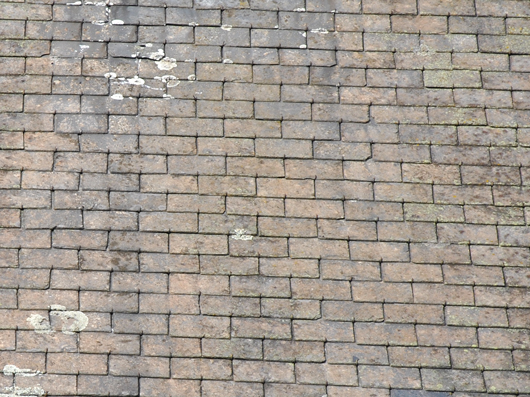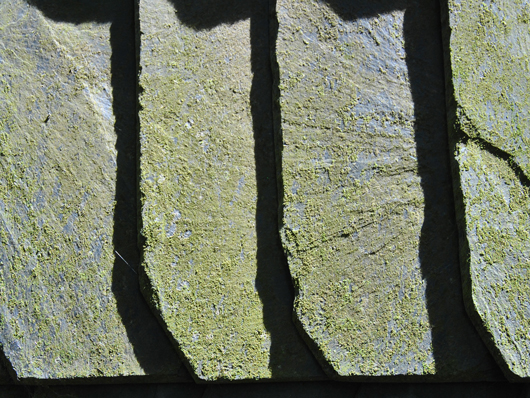 |
||
|
Weathering of slate
A good slate can be considered as a very durable stone and resistant to weathering.
There are no comprehensive investigations known to the author which allow reliable statements of the weathering behaviour of slate. The regional climate and more the environmental conditions gives information of the general weathering processes but the microclimatic conditions in and at a building can be very complex. Roofs, for example, are clearly exposed and can dry up after a rainfall. In niches moisture can remain and together with air pollutants induces the accumulation of salt and finally damages by salt action. In more or less humid places and below trees an intense biocolonisation can occur.
Besides for roofing, slate has been also used as dimension stone. Problems with deterioriation and the question of possible conservation measures of valuable objects could arise but slate has no real importance in conservation science compared to other dimension stones.
It is common practice in conservation science to firstly map the deterioration and damage pattern to get an overview of kind and intensity of the different deterioriation pattern. An applicable guideline for mapping and classification is the illustrated glossary on stone deterioration as an international established standard published by ICOMOS-ISCS (International Scientific Committee for Stone). Using this glossary guarantees a common language among professionals. Thus, if talking about weathering phenomena and damage phenomena one should use appropriate terms. The glossary comprises six families and each of it comprises 2 to 11 terms. The first family comprises the general terms in respect to weathering and stone. The other five families are crack and deformation, detachment, features induced by material loss, discolouration and deposit, as well as biological colonisation.
General terms after ICOMOS
These terms are objective: Biocolonisation by algae, for example, is an alteration irrespective of the customer which could consider it as degradation.
Pictures Exemplary images of alterations and damages of slate after ICOMOS. Move mouse over thumb to enlarge.
|

